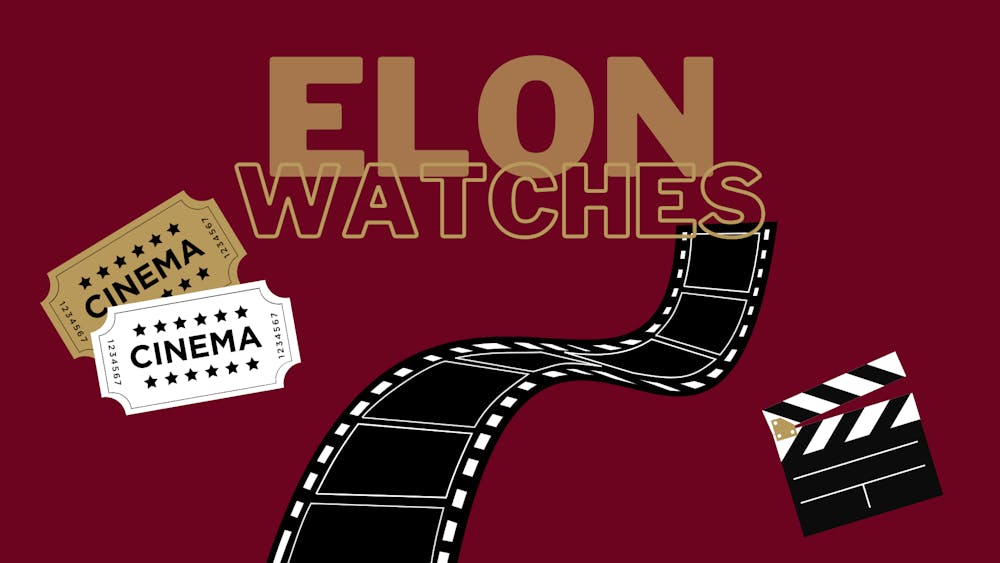When the credits rolled on my first viewing of “The Batman,” I wasn’t sure how to feel. It was unfocused, lengthy and unevenly paced, but also beautiful, intriguing, exhilarating and wonderfully disturbing. “The Batman” had its problems, but it also had a lot going for it. After letting the film sit, I craved it. Scenes were etched in my mind for a few days, and I decided I had to see it again.

“The Batman” follows a younger Bruce Wayne, played by Robert Pattinson, after two years of fighting crime. Wayne works with Catwoman, played by Zoe Kravitz, to follow threads laid out by a mysterious serial killer, The Riddler, played by Paul Dano, leading them into the criminal underbelly of Gotham City and an underworld of conspiracy and mistrust.
This film is jam-packed, and depending on who you are, this could be a good thing or a deal-breaker. I was expecting a film focused around a villain, like most Batman films. The film’s focus is rather muddled, but that isn’t necessarily to its detriment. As Batman follows the Riddler’s puzzles, the rabbit hole becomes deeper and branches off into new unexpected paths. The Riddler sometimes appears to guide the story, but he often isn’t the principal focus. Instead, the focus is often on the Gotham behind Gotham — driven by crime syndicates and their leaders, the Penguin, played by Colin Farrell, and Carmine Falcone, played by John Turturro. This works pretty well, and often leads back to the Riddler and Batman in surprising ways, which I won’t spoil here.
When the Riddler is the ring-leader, however, he steals the show. Dano’s portrayal of this Fincher-ish serial killer is chilling, smart and a little silly. At points, he’s the most terrifying villain since Heath Ledger’s Joker. He stands in horrifying positions of power, his influence felt through saw-like traps and puzzles laid out with esoteric and defiant language. At other points, he’s hard to take seriously, live streaming his horrid acts and giggling like a schoolboy. Mostly, this juxtaposition adds to the character’s creep factor — the audience never quite knows what he’s capable of, and there’s always the possibility that he could lash out. But at many points, I couldn’t help but giggle at him, and others in the theater couldn’t hold theirs in either.
After I told everyone I watched the film, the burning question on their minds was “How was Robert Pattinson as Batman?” Truth be told, after first watching “The Batman,” I thought he was a little dry. My second time a key word came to mind: “subtlety.” Pattinson shines brightest in the smaller moments: Subtle eye movements through his cowl show his thought process, and certain choices of delivery show otherwise hidden emotion. His voice is often gruff but soft, unlike the rage-filled growl of Christian Bale’s rendition of the caped crusader. This often dry performance lets the more emotional moments feel truly impactful. When genuine feeling shines through Wayne’s facade, the audience can more easily grasp a moment’s meaning.
Though the tone of the film is consistently dark and gritty, a welcomed bright spot is the buddy-cop relationship between Jim Gordon, played by Jeffrey Wright, and Batman. Of the few pieces of Batman media that I’ve seen, this relationship is seldom explored — usually, Batman sees the bat signal, goes to it, receives information from Gordon and leaves. In this iteration, Batman and Gordon often conduct investigations together, exchanging snappy dialogue and relatively fun quips without breaking up the overarching tone of the film.
A relationship that fell a little short for me, however, was the relationship between Batman and Catwoman. Both Kravitz’s and Pattinson’s performances are great, but the film itself doesn’t take enough time to develop their relationship, which pains me to say, as the film is already a staggering three hours long. Their relationship seems to shift from mostly platonic to full-on romance in a matter of minutes, creating a love story that lacks meaning in an otherwise meaningful film.
Arguably, the technical aspects of the film are the most impressive. The cinematography is wonderful — one shot caused me to audibly gasp. This wasn’t the only one either; several shots from this film are burned into my memory. The score, helmed by Michael Giacchino, is, in my opinion, his best work since “Rogue One: A Star Wars Story.” “The Batman” theme is equal parts haunting and badass, and The Riddler’s theme is equally genius, taking the iconic piece “Ave Maria” and transposing it to a minor key. Props must also be given to the sound design, the choreography, the lighting and editing.
One glaring issue I have with this film is that it didn’t seem to know when to end. There was a climax, a closing narration, but then a tease for a sequel, and a sort of epilogue. This may not seem like a tremendous deal, but each part of the ending had a separate sense of finality to it, making it feel like the film should have ended around four times in a row. My friends and I lowered our reclining seats, expecting it to end around 10 minutes earlier than it actually did. This issue doesn’t interfere with the overall plot, but it is a blemish on an otherwise amazing film.
Overall, “The Batman” is a captivating story of mystery, brutality, vengeance, hope and sorrow, which does many things right, but leaves room for improvement in subsequent entries. I wholeheartedly recommend this film.
Despite its flaws, “The Batman” is smart, beautiful, and enjoyable most of all. It takes a cast of beloved and widely known characters and somehow creates something unmistakably fresh. Final score: 9 out of 10 stars.


